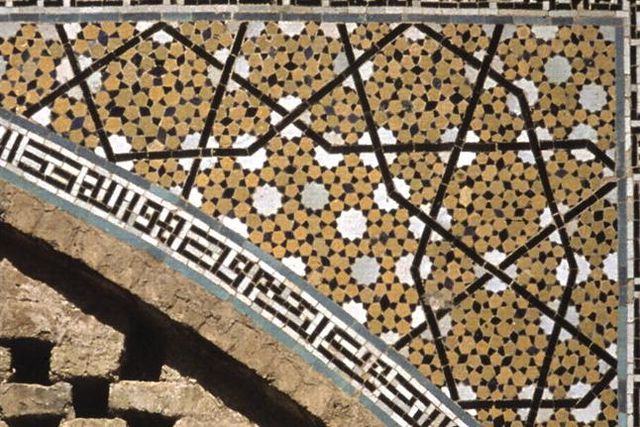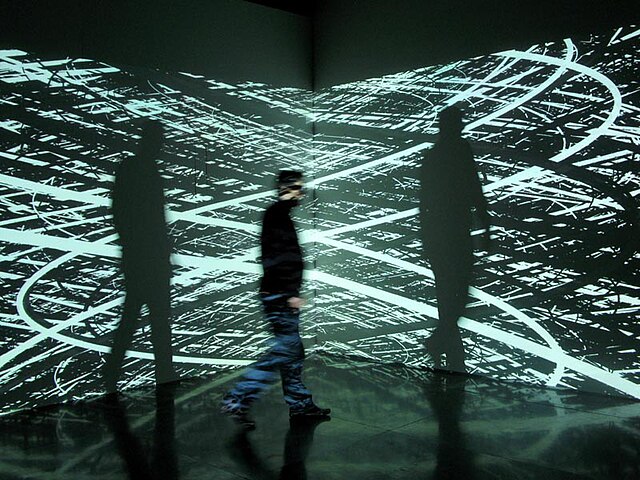Algorithmic art or algorithm art is art, mostly visual art, in which the design is generated by an algorithm. Algorithmic artists are sometimes called algorists.
"Octopod" by Mikael Hvidtfeldt Christensen. An example of algorithmic art produced with the software Structure Synth.
Islamic geometric patterns such as this girih tiling in the Darb-e Imam shrine in Isfahan, are precursors of algorithmic art.
Paolo Uccello made innovative use of a geometric algorithm, incorporating linear perspective in paintings such as The Battle of San Romano (c. 1435–1460): broken lances run along perspective lines.
Letter Field by Judson Rosebush, 1978. Calcomp plotter computer output with liquid inks on rag paper, 15.25 x 21 inches. This image was created using an early version of what became Digital Effects' Vision software, in APL and Fortran on an IBM 370/158. A database of the Souvenir font; random number generation, a statistical basis to determine letter size, color, and position; and a hidden line algorithm combine to produce this scan line raster image, output to a plotter.
Generative art is that post-conceptual art that in whole or in part has been created with the use of an autonomous system. An autonomous system in this context is generally one that is non-human and can independently determine features of an artwork that would otherwise require decisions made directly by the artist. In some cases the human creator may claim that the generative system represents their own artistic idea, and in others that the system takes on the role of the creator.
Condensation Cube, plexiglass and water; Hirshhorn Museum and Sculpture Garden, begun 1965, completed 2008 by Hans Haacke
Installation view of Irrational Geometrics 2008 by Pascal Dombis
Telepresence-based installation 10.000 Moving Cities, 2016 by Marc Lee
Album de 10 sérigraphies sur 10 ans, by François Morellet, 2009








